Do you ever have excavations on a bucket list… that you didn’t even realise were on a bucket list? That’s how I felt about digging my first mosaic. It was something that felt a bit… overrated or something, I didn’t really care about unearthing a mosaic…until the option was right in front of me. I was overcome by a feeling of excitement that was so pure, I told everyone I was going to expose a part of that mosaic if it was the last thing I would ever do. Thankfully, I didn’t have to fight anyone, and soon enough I was lifting dark brown soil off of bright blue and red tesserae.
The Dig Site: Within a cute little Northamptonshire village (and through a few wooden fences and farmers fields), lay the remains of an elaborate Roman Villa. You wouldn’t know it, really. There aren’t any obvious Roman remains in the village and the ground appears quite flat. But underneath? Hypocausts. Mosaics. The floor of a cold plunge pool.
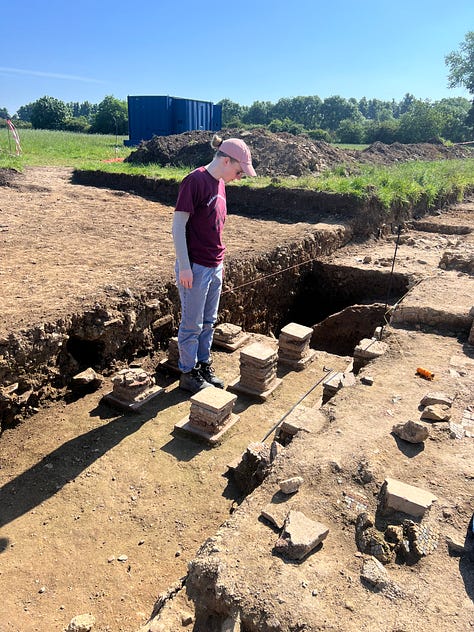
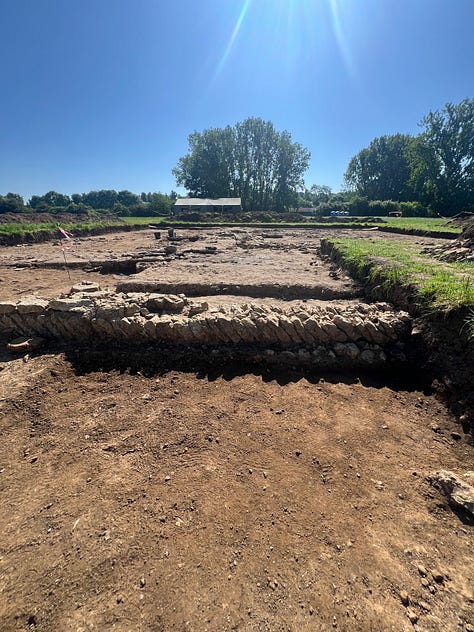
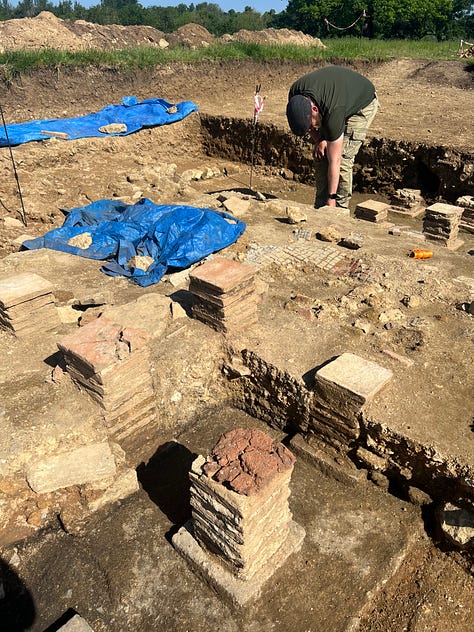
Digging Deeper: I arrived for a weekend of volunteering. Cranfield University had been there for three weeks already, so the site was open and moving along well, and it was nice to jump in without any real pressure to move dirt. C was planning, D was giving tours to the public, and a few students who decided to give up their weekend were working on sorting finds in the big army style tent that was put up on site.
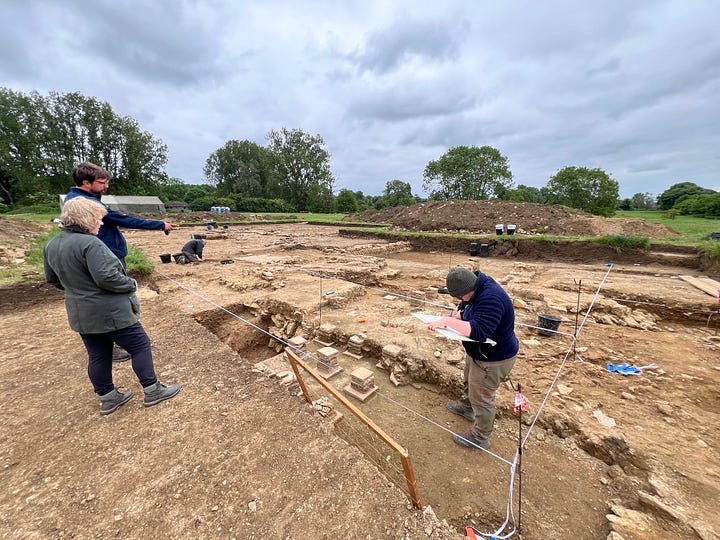
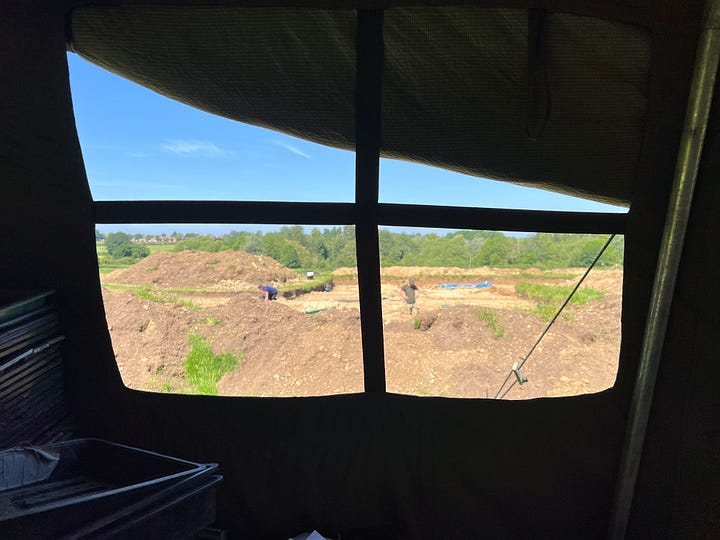
Top Finds: Obviously, the mosaic. Carefully lifting the soil to reveal such bright colours is an unmatched experience and thoughts raced through my mind. Think of the toes that used to grace this floor! Is there a pattern to these mosaics? Let me lift another and see! Oh, nope! But hey, still bright and beautiful. There were also bricks with animal prints or thumb prints, a commemorative coin, and getting to stand inside a hypocaust was very cool indeed. I tried pushing one of the stacks over too and they are very firmly in place! Amazing that the construction has withstood thousands of years! There were also about a million (give or take) vole skeletons found in pieces on the outside of one of the walls. What could those have been for? This ultimately led to quite a few conversations about Romans battling voles and how many voles could a person beat in a fight, but we figured out that likely, the vole skeletons were actually from bird pellets. As they were found outside one of the Roman walls, this could have been where falcons or other large birds of prey were kept. How interesting is that?!

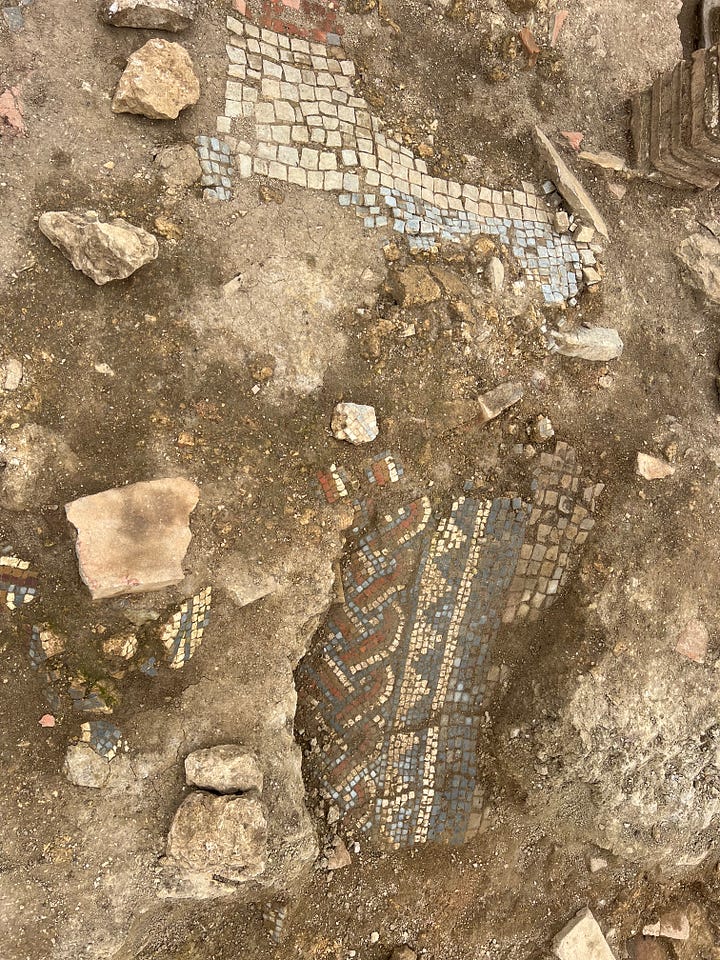

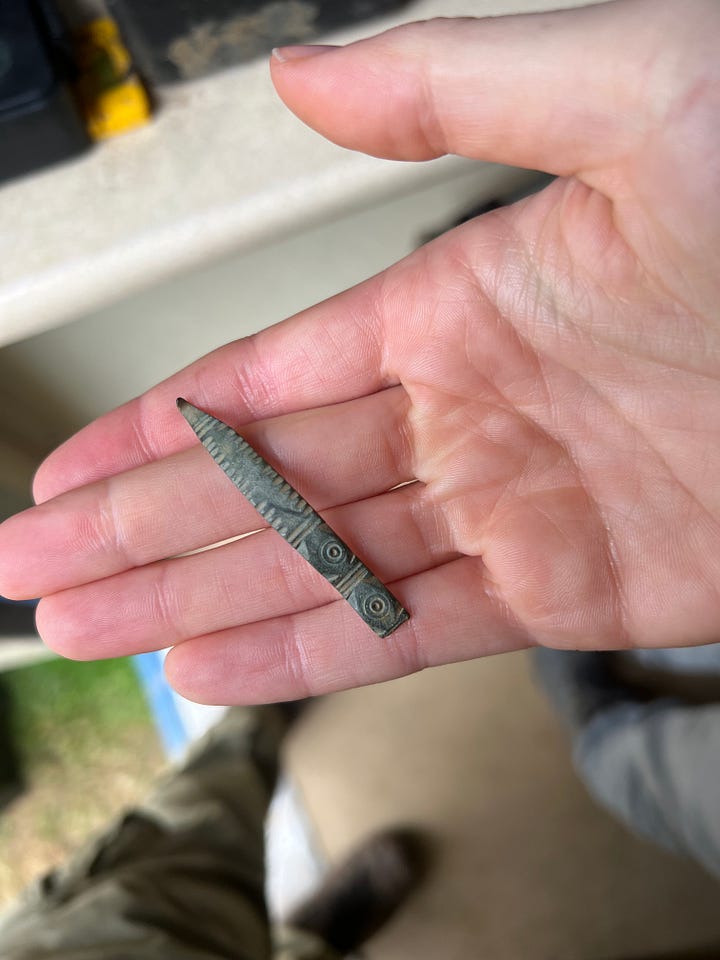
Site Digs & Dig Grub: We camped next to the site in Bell tents (of course) that were slowly being overrun by ants. D had warned us about it, but we didn’t think it would be so… significant. Every hole by the zipper was utilised by those little buggers and it took me until a few days afterwards to firmly believe that ants weren’t running on my skin at night. In the evening of the first night, everyone went to hang out in the local church. It being England, of course the church was historic and amazing. And what were we doing? Having wine in the back room after hours. I mean, it wasn’t the first time wine was found in that church, but it felt quite elite for a communal space for an archaeological dig! Grub was stunning tesco meal deals on the side of the excavation, where D, C, T and I all chatted archaeology and put the world to rights, among vole-battle conversations. So many times on digs you’re in charge of other people and can’t fully relax, but for one of the days in the weekend, it was just the four of us. All trained archaeologists who don’t need (much) guidance, and we could just hang out. It was lovely!
Trowels Down: One evening, there was a goodbye dinner for a military guy who has been coming to Band of Brothers digs for the past two years. (read more about that here). As it was only about 20 minutes away, we had to go, and accidentally convinced about 10 people to come dig with us the next day. A 350% increase in dig staff would be a surprise for sure! Only a few came in the end, but they were loving every second of it. All military staff, they don’t get much hands on time with history, so the amount of smiles, selfies, and “I’m going to send a pic of this to my kid!” were heartwarming. And what would be the best way to end a dig with great masonry, great friends, and Roman history? Tapas. Not your typical dig grub, but the local pub should get a Michelin star for the display. Some of the best food I’ve found in the country! What an excellent final dig discovery.
To Learn More: An article in the Northamptonshire Telegraph— read here, and watch the next season of Digging for Britain in January!





